Found out through research by my ‘very older’ brother Dr. Walt
that the following persons are responsible for my family.
Kings. Geesh! Each of these is traced through real records too. I wonder how many other people are the same?!?!
Here is the root of the family tree. This is Geoffrey IV Plantagenet Count of Anjou, France (Great Grandfather 26)

Alternative Titles: Geoffrey Plantagenet, Geoffrey the Fair, Geoffroi Plantagenet, Geoffroi le Bel
Geoffrey IV, also called Geoffrey Plantagenet, by name Geoffrey The Fair, French Geoffroi Plantagenet, or Geoffroi Le Bel, (born Aug. 24, 1113—died Sept. 7, 1151, Le Mans, Maine [France]), count of Anjou (1131–51), Maine, and Touraine and ancestor of the Plantagenet kings of England through his marriage, in June 1128, to Matilda (q.v.), daughter of Henry I of England. On Henry’s death (1135), Geoffrey claimed the duchy of Normandy; he finally conquered it in 1144 and ruled there as duke until he gave it to his son Henry (later King Henry II of England) in 1150.
Geoffrey was popular with the Normans, but he had to suppress a rebellion of malcontent Angevin nobles. After a short war with Louis VII of France, Geoffrey signed a treaty (August 1151) by which he surrendered the whole of Norman Vexin (the border area between Normandy and Île-de-France) to Louis.
He was followed by Henry II Plantegenet (Great Grandfather 25)
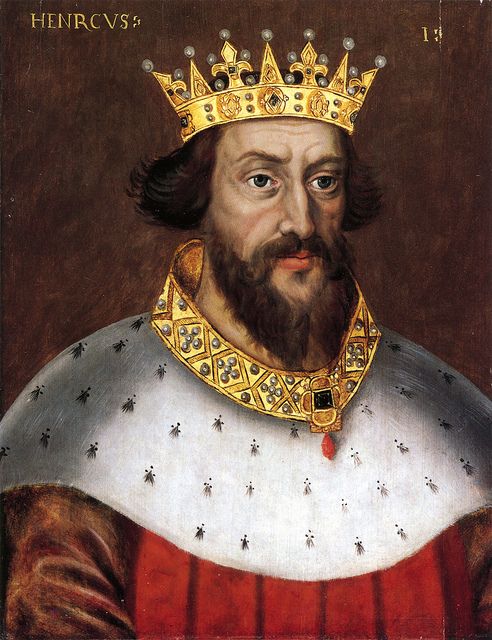
Alternative Titles: Henry Curtmantle, Henry Fitzempress, Henry Plantagenet, Henry of Anjou
Henry II, byname Henry of Anjou, Henry Plantagenet, Henry FitzEmpress, or Henry Curtmantle (Short Mantle), (born 1133, Le Mans, Maine [now in France]—died July 6, 1189, near Tours), duke of Normandy (from 1150), count of Anjou (from 1151), duke of Aquitaine (from 1152), and king of England (from 1154), who greatly expanded his Anglo-French domains and strengthened the royal administration in England. His quarrels with Thomas Becket, archbishop of Canterbury, and with members of his own family (his wife, Eleanor of Aquitaine, and such sons as Richard the Lion-Heart and John Lackland) ultimately brought about his defeat.
John I Lackland Plantegenet (Great Grandfather 24)
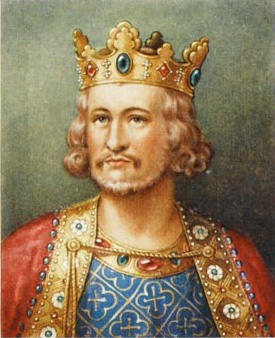
Alternative Titles: Jean Sans Terre, John Lackland
John, byname John Lackland, French Jean sans Terre, (born c. 1166—died October 18/19, 1216, Newark, Nottinghamshire, England), king of England from 1199 to 1216. In a war with the French king Philip II, he lost Normandy and almost all his other possessions in France. In England, after a revolt of the barons, he was forced to seal the Magna Carta (1215).
John was the youngest son of Henry II and Eleanor of Aquitaine. Henry’s plan (1173) to assign to John, his favourite son (whom he had nicknamed Lackland), extensive lands upon his marriage with the daughter of Humbert III, count of Maurienne (Savoy), was defeated by the rebellion the proposal provoked among John’s elder brothers. Various provisions were made for him in England (1174–76), including the succession to the earldom of Gloucester. He was also granted the lordship of Ireland (1177), which he visited from April to late 1185, committing youthful political indiscretions from which he acquired a reputation for reckless irresponsibility. Henry’s continued favour to him contributed to the rebellion of his eldest surviving son, Richard I (later called Coeur de Lion), in June 1189. For obscure reasons, John deserted Henry for Richard.
On Richard’s accession in July 1189, John was made count of Mortain (a title that became his usual style), was confirmed as lord of Ireland, was granted lands and revenues in England worth £6,000 a year, and was married to Isabella, heiress to the earldom of Gloucester. He also had to promise (March 1190) not to enter England during Richard’s absence on his Crusade. But John’s actions were now dominated by the problem of the succession, in which his nephew, the three-year-old Arthur I, duke of Brittany, the son of his deceased elder brother Geoffrey, was his only serious rival. When Richard recognized Arthur as his heir (October 1190), John immediately broke his oath and returned to England, where he led the opposition to Richard’s dictatorial chancellor, William Longchamp.
Henry III Plantegenet (Great Grandfather 23)
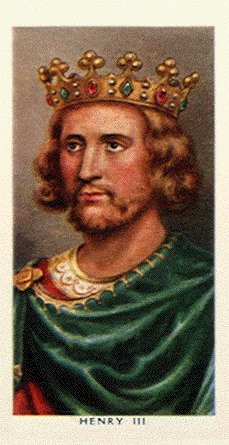
Henry III, (born October 1, 1207, Winchester, Hampshire, Eng.—died November 16, 1272, London), king of England from 1216 to 1272. In the 24 years (1234–58) during which he had effective control of the government, he displayed such indifference to tradition that the barons finally forced him to agree to a series of major reforms, the Provisions of Oxford (1258).
The elder son and heir of King John (ruled 1199–1216), Henry was nine years old when his father died. At that time London and much of eastern England were in the hands of rebel barons led by Prince Louis (later King Louis VIII of France), son of the French king Philip II Augustus. A council of regency presided over by the venerable William Marshal, 1st earl of Pembroke, was formed to rule for Henry; by 1217 the rebels had been defeated and Louis forced to withdraw from England. After Pembroke’s death in 1219 Hubert de Burgh ran the government until he was dismissed by Henry in 1232. Two ambitious Frenchmen, Peter des Roches and Peter des Rivaux, then dominated Henry’s regime until the barons brought about their expulsion in 1234. That event marked the beginning of Henry’s personal rule.
Edward I Plantegenet (Longshanks) (Great Grandfather 22)
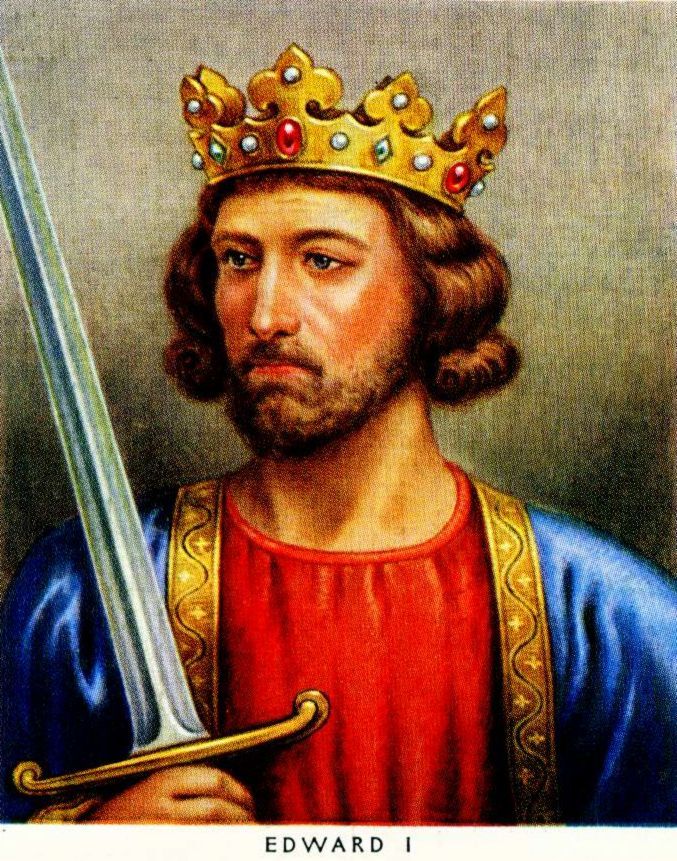
Alternative Title: Edward Longshanks
Edward I, by name Edward Longshanks, (born June 17, 1239, Westminster, Middlesex, England—died July 7, 1307, Burgh by Sands, near Carlisle, Cumberland), son of Henry III and king of England in 1272–1307, during a period of rising national consciousness. He strengthened the crown and Parliament against the old feudal nobility. He subdued Wales, destroying its autonomy; and he sought (unsuccessfully) the conquest of Scotland. His reign is particularly noted for administrative efficiency and legal reform. He introduced a series of statutes that did much to strengthen the crown in the feudal hierarchy. His definition and emendation of English common law has earned him the name of the “English Justinian.”
Edward was the eldest son of King Henry III and Eleanor of Provence. In 1254 he was given the duchy of Gascony, the French Oléron, the Channel Islands, Ireland, Henry’s lands in Wales, and the earldom of Chester, as well as several castles. Henry negotiated Edward’s marriage with Eleanor, half sister of Alfonso X of Leon and Castile. Edward married Eleanor at Las Huelgas in Spain (October 1254) and then traveled to Bordeaux to organize his scattered appanage. He now had his own household and officials, chancery and seal, with an exchequer (treasury) at Bristol Castle; though nominally governing all his lands, he merely enjoyed the revenues in Gascony and Ireland. He returned to England in November 1255 and attacked Llywelyn ap Gruffudd, prince of Gwynedd, to whom his Welsh subjects had appealed for support when Edward attempted to introduce English administrative units in his Welsh lands. Edward, receiving no help from either Henry or the marcher lords, was defeated ignominiously. His arrogant lawlessness and his close association with his greedy Poitevin uncles, who had accompanied his mother from France, increased Edward’s unpopularity among the English. But after the Poitevins were expelled, Edward fell under the influence of Simon de Montfort, his uncle by marriage, with whom he made a formal pact. Montfort was the leader of a baronial clique that was attempting to curb the misgovernment of Henry.
Edward II Plantegenet (Great Grandfather 21)
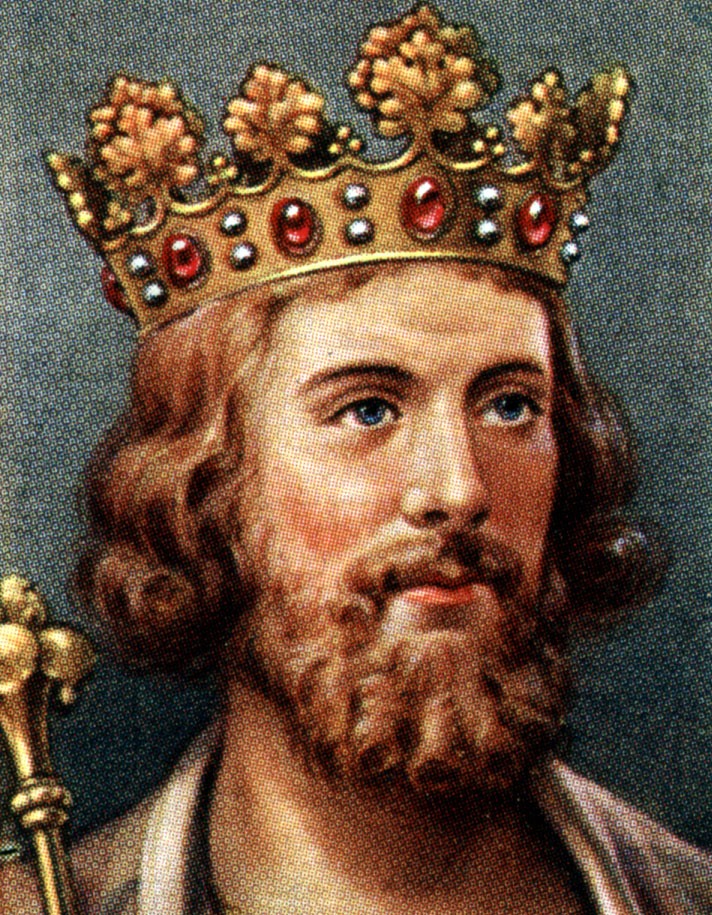
Alternative Title: Edward of Caernarvon
Edward II, byname Edward of Caernarvon, (born April 25, 1284, Caernarvon, Caernarvonshire, Wales—died September 1327, Berkeley, Gloucestershire, England), king of England from 1307 to 1327. Although he was a man of limited capability, he waged a long, hopeless campaign to assert his authority over powerful barons.
The fourth son of King Edward I, he ascended the throne upon his father’s death (July 7, 1307) and immediately gave the highest offices to Edward I’s most prominent opponents. He earned the hatred of the barons by granting the earldom of Cornwall to his frivolous favourite (and possible lover), Piers Gaveston. In 1311 a 21-member baronial committee drafted a document—known as the Ordinances—demanding the banishment of Gaveston and the restriction of the King’s powers over finances and appointments. Edward pretended to give in to these demands; he sent Gaveston out of the country but soon allowed him to return. In retaliation the barons seized Gaveston and executed him (June 1312).
Edward had to wait 11 years to annul the Ordinances and avenge Gaveston. Meanwhile, the Scottish king Robert the Bruce was threatening to throw off English overlordship. Edward led an army into Scotland in 1314 but was decisively defeated by Bruce at Bannockburn on June 24. With one stroke, Scotland’s independence was virtually secured, and Edward was put at the mercy of a group of barons headed by his cousin Thomas of Lancaster, who by 1315 had made himself the real master of England. Nevertheless, Lancaster proved to be incompetent; by 1318 a group of moderate barons led by Aymer de Valence, earl of Pembroke, had assumed the role of arbitrators between Lancaster and Edward. At this juncture Edward found two new favourites—Hugh le Despenser and his son and namesake. When the king supported the younger Despenser’s territorial ambitions in Wales, Lancaster banished both Despensers. Edward then took up arms on their behalf. His opponents fell out among themselves, and he defeated and captured Lancaster at Boroughbridge, Yorkshire, in March 1322. Soon afterward, he had Lancaster executed.
Edward III Plantegenet (Great Grandfather 20)
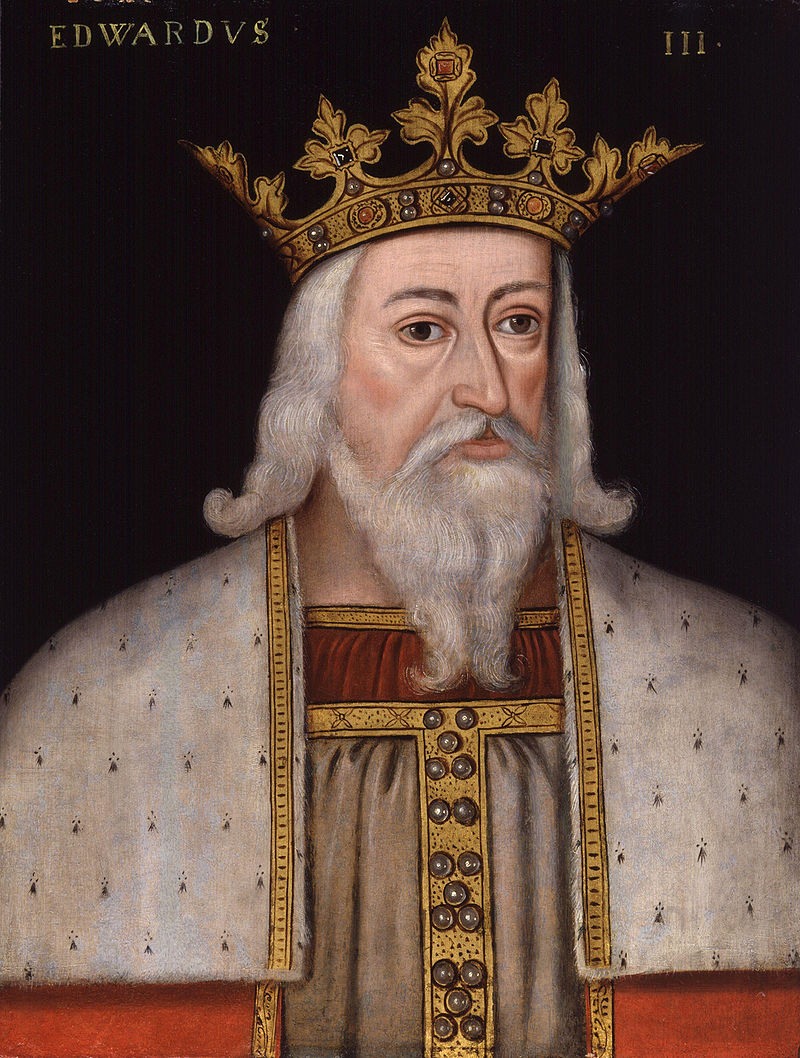
Alternative Title: Edward of Windsor
Edward III, byname Edward of Windsor, (born November 13, 1312, Windsor, Berkshire, England—died June 21, 1377, Sheen, Surrey), king of England from 1327 to 1377, who led England into the Hundred Years’ War with France. The descendants of his seven sons and five daughters contested the throne for generations, climaxing in the Wars of the Roses (1455–85).
The eldest son of Edward II and Isabella of France, Edward III was summoned to Parliament as earl of Chester (1320) and was made duke of Aquitaine (1325), but, contrary to tradition, he never received the title of prince of Wales.
Edward III grew up amid struggles between his father and a number of barons who were attempting to limit the king’s power and to strengthen their own role in governing England. His mother, repelled by her husband’s treatment of the nobles and disaffected by the confiscation of her English estates by his supporters, played an important role in this conflict. In 1325 she left England to return to France to intervene in the dispute between her brother, Charles IV of France, and her husband over the latter’s French possessions, Guyenne, Gascony, and Ponthieu. She was successful; the land was secured for England on condition that the English king pay homage to Charles. This was performed on the king’s behalf by his young son.
John of Gaunt (Great Grandfather 19 ) Duke of Lancaster
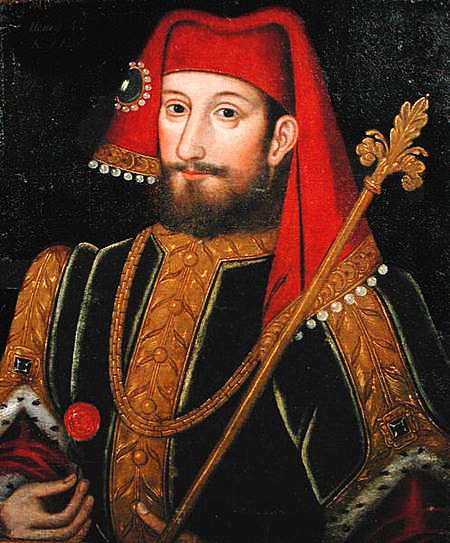
Alternative Titles: John of Gaunt, duc d’Aquitaine, John of Gaunt, earl of Richmond
John of Gaunt, duke of Lancaster, also called (1342–62) earl of Richmond, or (from 1390) duc (duke) d’Aquitaine, (born March 1340, Ghent—died Feb. 3, 1399, London), English prince, fourth but third surviving son of the English king Edward III and Philippa of Hainaut; he exercised a moderating influence in the political and constitutional struggles of the reign of his nephew Richard II. He was the immediate ancestor of the three 15th-century Lancastrian monarchs, Henry IV, V, and VI. The term Gaunt, a corruption of the name of his birthplace, Ghent, was never employed after he was three years old; it became the popularly accepted form of his name through its use in Shakespeare’s play Richard II.
Through his first wife, Blanche (d. 1369), John, in 1362, acquired the duchy of Lancaster and the vast Lancastrian estates in England and Wales. From 1367 to 1374 he served as a commander in the Hundred Years’ War (1337–1453) against France. On his return he obtained the chief influence with his father, but he had serious opponents among a group of powerful prelates who aspired to hold state offices. He countered their hostility by forming a curious alliance with the religious reformer John Wycliffe. Despite John’s extreme unpopularity, he maintained his position after the accession of his ten-year-old nephew, Richard II, in 1377, and from 1381 to 1386 he mediated between the King’s party and the opposition group led by John’s younger brother, Thomas Woodstock, earl of Gloucester.
In 1386 John departed for Spain to pursue his claim to the kingship of Castile and Leon based upon his marriage to Constance of Castile in 1371. The expedition was a military failure. John renounced his claim in 1388, but he married his daughter, Catherine, to the young nobleman who eventually became King Henry III of Castile and Leon.
Dianna Princess of Wales
Queen Elizabeth II, current Queen of England
14th Great Grandfather Sir William Gardner
Elizabeth de Ferrers Baroness Greystoke (Great Grandmother 17)
Joan Beaufort (Great Grandmother 18) Countess of Westmorland
Richard II (Great Grandfather 1st Cousin 20x removed)
Henry IV Bolingbroke Plantagenet (Great Uncle 19)
John of Gaunt (Great Grandfather 19 ) Duke of Lancaster
Richard II Plantegenet (Great Grandfather)
John Fairborn Beaufort Admiral of North and West Lord High Constable Earl of Sommerset (Great Grandfather 17)
John I Lackland Plantegenet (Great Grandfather 24)
Henry II Plantegenet (Great Grandfather 25)
Edward I Plantegenet (Longshanks) (Great Grandfather 22)
Edward II Plantegenet (Great Grandfather 21)
Geoffrey IV Plantagenet Count of Anjou, France (Great Grandfather 26)
Henry III Plantegenet (Great Grandfather 23)
Edward III Plantegenet (Great Grandfather 20)
Edward Prince of Wales known as Edward of Woodstock (The Black Prince) was Duke of Cornwall in 1337. He married Joan Countess of Kent.
Henry Cardinal Beaufort Lord Chancellor England (Great Uncle 19)
Thomas Beaufort Beaufort Castle Anjou France Lord Chancellor (I like old Tom)
William de Mohun of Dunster, 1st Earl of Somerset
Edward Seymour, 1st Duke of Somerset
Margaret Beaufort, Countess of Richmond and Derby
George Washington
Thomas Jefferson
John Quincy Adams
Franklin Delano Roosevelt
George H.W. Bush
George W. Bush
Sir Winston Spencer Churchill
Alfred Lord Tennyson
Bertrand Russell
9th Great Grandmother Mary Royce Immig was accused of witchcraft in Fairfield CT but was acquitted in 1654. Yay no witches.
Had a couple of Great Grandfathers beheaded by Henry the 8th
Grandfathers 17 through 12 were Dukes of Norfolk
Two of them were also Earls of Surrey and Sheriff jobs
There is 17th Great Grandfather Sir Richard Waller/Kent who was the hero of Agincourt in 1415 and Sheriff of Kent. He kidnapped royalty. He was Knighted in the field at Agincourt for capturing Prince Charles, Duke of Orleans.
14th Great Grandfather Sir William Gardner Fought in the battle of Bosworth Field during that battle he had his halberd, a two handed pole weapon and he KILLED KING RICHARD THE THIRD. Henry the VII knighted him for it.
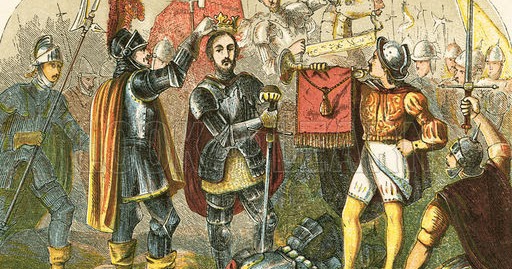
There are the Lord Chancellor of England, 11th Great Grandfather George Garder was a Preacher, and of course the entire Plantagenet family and nearly every monarch in Europe.
More information about the family tree is available:
https://www.britroyals.com/plantagenettree.asp
http://www.lineagesocietyofamerica.com/plantagenet-society.html
http://www.royaldescent.net/edward-i-plantagenet-king-of-england-2/
So how many people fit this bill??? Well the complete bill I’m not sure, but the whole bill is well.. quite a lot.

